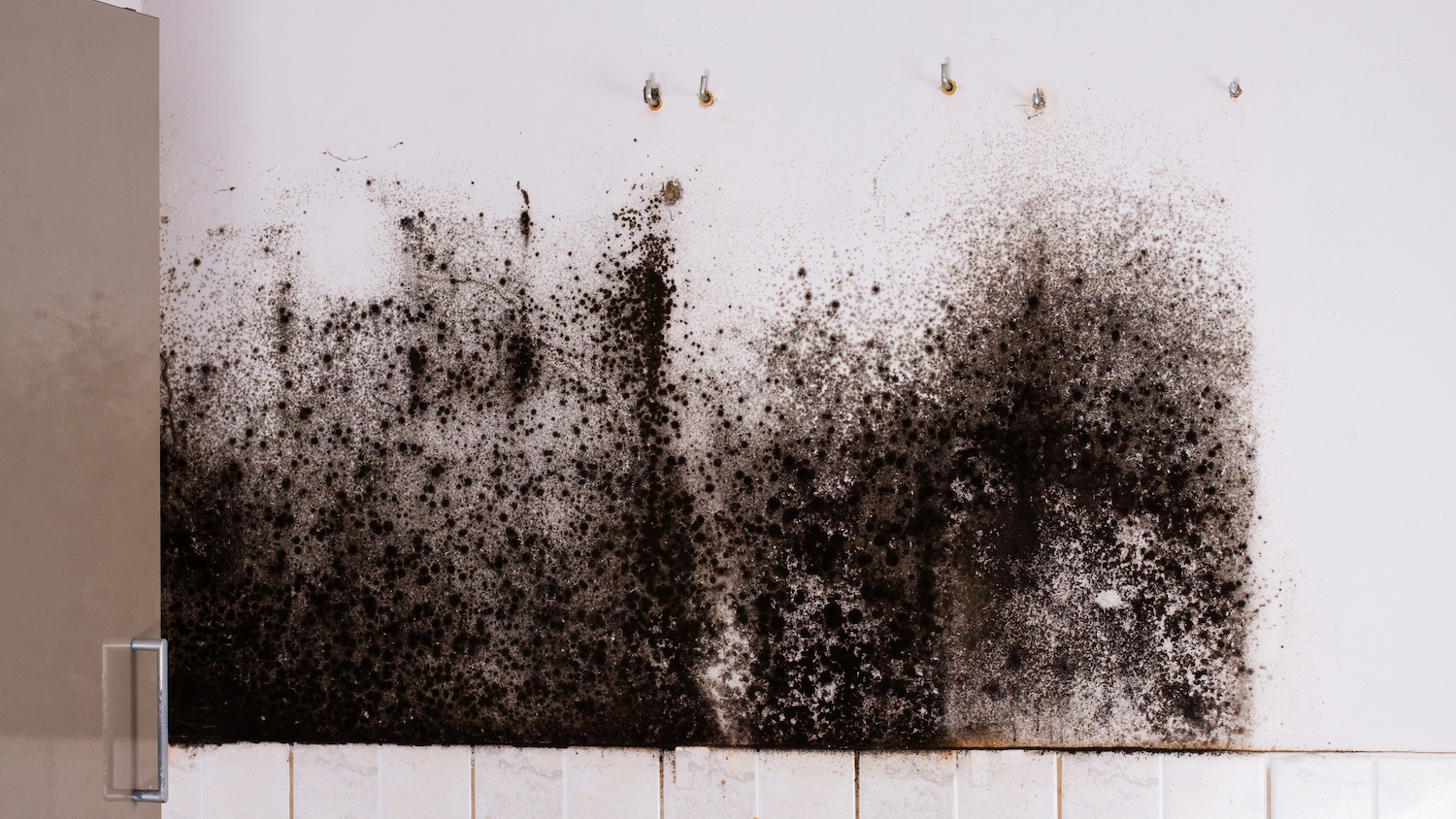
A smart device with built-in sensors is providing social landlords with greater insight into the environmental conditions of their properties – and helping them engage with their residents to save energy. Tom Robins, chief executive of Switchee, tells Denise Chevin more.
Social landlords are under immense pressure to ensure their properties provide safe and healthy living conditions for tenants – as well as reduce fuel poverty. The pressure was ramped up by government in the wake of the death of two-year-old Awaab Ishak, who died shortly after his second birthday in December 2020. His home on an estate in Rochdale had been exposed to “extensive” mould for “some considerable time”, a mould and fungus expert told his inquest.
In July, new obligations became enshrined in law with the Social Housing (Regulation) Act 2023 (SHRA 2023), which strengthens the powers of the Regulator of Social Housing to tackle failing social landlords and will enhance compliance requirements for those landlords.
To understand how their properties are performing, learn more about their energy efficiency and get greater insight into whether the conditions inside properties are susceptible to the formation of damp or mould, many social landlords are turning to Switchee. Created in 2015, this is a smart device with built-in sensors and advanced algorithms.
Tom Robins joined Switchee in 2020 to use his experience in housing and start-ups to scale up the company and get the product out more widely in the market.
Switchee is now being used by 120 different housing providers on some of their properties and about 20,000 devices have been installed. As four million people live in social housing, the potential for future growth is huge. The new climate for housing providers and the need to give more focus to asset management is accelerating take up.
Here, Robins talks in more detail about the solutions Switchee brings.

“The NHS definition of fuel poverty is if the property is intentionally below 18 degrees when occupied. What we have seen over the last two years is a 60% increase in the proportion of properties that are heated to less than 18 degrees when occupied.”
What problem does Switchee solve?
The biggest challenge for housing providers is a very limited understanding of the performance of their assets and how they are being used by customers.
Installing a Switchee in residents’ homes and providing them with a high-quality consumer app, with which they can easily engage, helps landlords to transform their operations and customer relations.
Switchee gives landlords three core capabilities – connectivity, control, and communication. It sends data every 10 minutes from the device (using a SIM card so there are no wifi or connectivity issues).
That data then interacts with Switchee’s algorithms, which deliver insights so that housing providers can better understand the true performance of the property from an energy and ‘lived in’ perspective. For example, how fast is it to heat or to cool, is it overheated or underheated, and are there conditions that could promote condensation or mould?
A resident’s boiler can be controlled remotely – if residents want that – and that means we can help improve the performance of the heating system. This will become increasingly important as customers move to heat pumps, which are more complicated than gas boilers.
On the communication front, we can send messages to the devices’ touch screens. We get a phenomenal response rate doing this – 90% in 24 hours. Compare that to any other communication method with a resident, and it is clear it is a game changer. Housing providers are using it to communicate a range of different things – from letting residents know whether a lift has broken down and when it might be fixed, to booking appointments and conducting surveys.
What are the sensors measuring?
Temperature, pressure, humidity, light, and motion (the latter so we know if the property is occupied) are the measures on the device. Then, using the algorithms, these measurements can provide further insight. Take fuel poverty, for example. The NHS definition of fuel poverty is if the property is intentionally below 18 degrees when occupied. What we have seen over the last two years is a 60% increase in the proportion of properties that are heated to less than 18 degrees when occupied. And those people would not typically identify as being in fuel poverty.
In one organisation we are working with, we were able to communicate with those households and offer the residents fuel vouchers.
Our algorithms can also identify when someone is at home or not and if they are not home, but the heat is on, we are able to turn the heating off – if they opt to have that service.
This is really helpful as many residents do not have a schedule set for their heating, so they will just be turning it on and off, and that is one of the least efficient ways of using your heating. Our help centre can set it up remotely for them.
We have also picked up on a change of behaviour in that people are having their heating at a normal temperature for short spells and then turning down the temperature for longer. That is bad for mould as the walls never get sufficiently warm to kill the mould off or to prevent mould spores surviving and thriving on walls. We have seen a significant increase in the proportion of properties that have conditions that are favourable for mould.
Is the technology proprietary?
Yes, it is completely proprietary. The requirements of the housing industry are just so different that we have had to build something bespoke.
“We always encourage our landlord customers to be very transparent when explaining to their residents why they want to install the device.”
Do residents feel the device is intrusive?
No, because they see its value. We always encourage our landlord customers to be very transparent when explaining to their residents why they want to install the device. Switchee does not engage in more controversial issues like debt collection or anti-social behavior, or anything along those lines. Ultimately, we focus on improving resident wellbeing and saving people money on their heating bills.
Are housing providers actively using the information you provide?
They are, but there is a challenge with the low installation or low penetration rates. Certainly, the housing associations with the higher penetration rates are moving significantly faster. But they are finding properties with problems they were unaware of.
For example, we have been able to identify when people have unfortunately become unemployed. We have even identified a case of domestic abuse. This came about when we identified an erratic use of heating. For periods of time, the property just had what we call ‘secondary sources of heating’, which is when the property is getting warmer, but the boiler is not on. The heating might be coming from a gas ring on the cooker, or something like that.
So we identified a very interesting pattern of behaviour, which showed secondary heating on rather than the main heating when one person was there and the main heating only on when two were there. We alerted the housing association, who sent their affordable warmth officer round and what she found was a case of domestic abuse.
Do you have any tie up with smart meters from energy retailers that measure energy consumption?
“We are seeing substantially higher condensation and mould issues in new builds than would be expected. Part of that is how the residents interact with the property.”
With the approval of the resident, we can include smart meter data as part of the data that is presented. Combining with smart meter data enables an even more accurate analysis of the thermal performance of a property. In properties that have been retrofitted to make them more energy efficient, by measuring before and after, we can determine the true performance in practice and calculate how much benefit the investment has had, rather than just saying it has moved from an EPC E to an EPC C, say.
We have also worked on some bigger projects, including the Oxford Energy Super Hub. This is an estate just south of Oxford where an entire social housing community is being taken off the grid and energy provided by a combination of solar panels, battery storage and ground source heat pumps. We have been working as the control partner of the heat pumps and developed a model where we can change people’s heating schedules to optimise it for grid loading and for grid cost using the Octopus Energy flexible tariff.
What other challenges have you identified in housing?
We are seeing substantially higher condensation and mould issues in new builds than would be expected. Part of that is how the residents interact with the property. Take the case of having a shower. If you didn’t open the window when you showered in your previous home because it was naturally well ventilated, you should open the window when you move into a new property, which is better sealed, because otherwise you can see condensation, damp and mould form very quickly. It underlines the importance of educating people about living in a new property.
Don’t miss out on BIM and digital construction news: sign up to receive the BIMplus newsletter.












